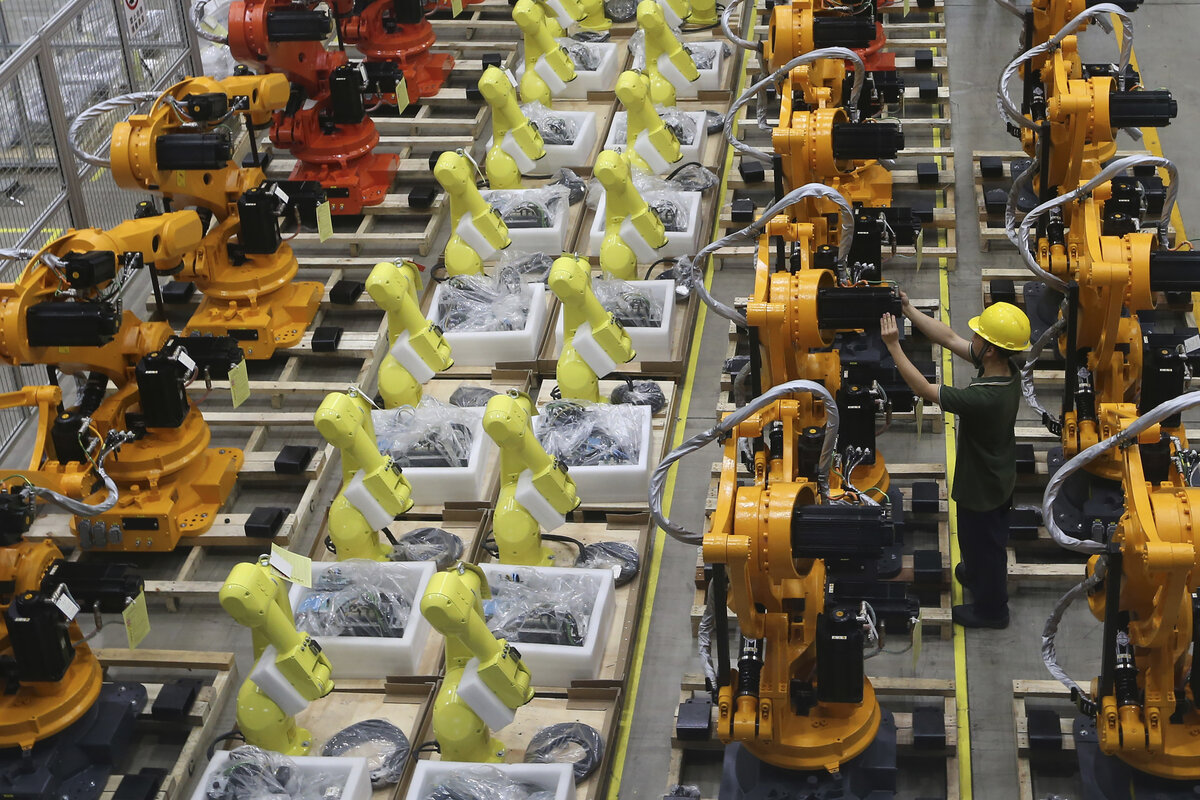Will a robot snatch away your job? Or will you learn to love intelligent machines as co-workers?
In today’s quickly evolving workplace a little of either may be true. Robots were once seen as workers that would free humans from the “three D” jobs: dull, dirty, and dangerous. Unskilled laborers would have their jobs handed to machines that never needed to take a day off, a vacation, or even a coffee break.
That’s still a concern. But humans have also proved resilient, possessing a wide array of fine motor skills that have proved difficult to reproduce in machines. While robots might operate using one sensor, perhaps a kind of vision, humans can tap five senses to assess a situation (does that thing smell funny?), as well as a complex set of memories and experiences. When robots can catch up is anyone’s guess.
Still, more and more robots are scurrying around places like gigantic Amazon distribution centers, where they deliver packages to chutes matched to the right delivery ZIP code. Theirs paths as they roll about the warehouse floor are based on complex algorithms that maximize efficiency.
But for now, at least, humans are needed to pack the actual boxes, which might contain several items of different sizes, shapes, weights, and fragility. That’s a Rubik’s Cube of packing choices that still stumps a robot, but is easily handled by a human.
As artificial intelligence advances, robots will move into higher-skilled jobs that seem especially human. This spring, for example, minor league baseball is experimenting with a “robo-umpire” called TrackMan that calls balls and strikes behind home plate. (No more fans yelling at a human ump “Get a pair of glasses!)
Journalists have fancied themselves pretty safe from robo-job stealing. But RADAR, a robot news writer in Britain, researches and writes stories based on templates created by humans, producing about 8,000 local news stories a month. Humans are still needed to double-check the work, just as editors do with human journalists today.
Observers worry that the historically low 3.6% jobless rate in the United States is temporarily masking this robot revolution convulsing the workplace. In April, the Organization for Economic Cooperation and Development estimated 14% of the jobs in its 36 member nations are at “high risk” of being eliminated by automation while another 32% will undergo major changes in how they are done. Millions of workers young and old will need to learn new skills to keep their jobs or qualify for new ones.
How to prepare to work alongside robots and other manifestations of artificial intelligence is a challenge that individuals, educators, employers, and governments are going to be facing at an ever-quickening pace.





